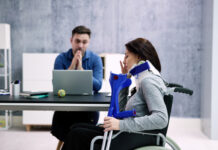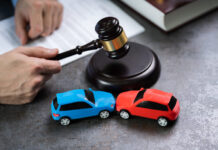Electric scooters promise a fun, efficient way to navigate the urban sprawl, reducing carbon footprints and combating city congestion. However, with this surge comes an array of safety concerns and legal implications that riders, pedestrians, and lawmakers must navigate. This surge of accidents has also resulted in an increase in cases taken on by law firms such as The Law Place, who deal with personal injury across much of Florida.
In recent years, Florida’s streets have seen a vibrant surge of electric scooters, zipping through traffic and parked on sidewalks, ready for the next rider. This eco-friendly transportation revolution offers a convenient and green alternative to traditional vehicles, aligning with the sunshine state’s progressive and environmentally conscious ethos.
The Allure of Electric Scooters
The electric scooter has swiftly become the darling of Florida’s urban transportation scene. Their appeal lies in their simplicity and agility, able to bypass traffic jams, offer door-to-door convenience, and provide an exhilarating open-air journey.
They’ve been embraced by city dwellers for their cost-effectiveness, negating the need for fuel, insurance, and hefty parking fees that come with car ownership. Environmental considerations have also propelled their popularity; electric scooters represent a cleaner mode of transport, with zero emissions contributing to urban air quality and broader environmental goals.
Cities across Florida have been keen to integrate these scooters into their transportation plans, recognizing their potential to enhance mobility and reduce ecological impact. Public response has been mixed, some enthusiastically adopt the trend, while others express concern over safety and regulation. Nonetheless, electric scooters continue to gain traction, reshaping the state’s transport history with their silent hum and eco-friendly promise.
Safety Concerns with Electric Scooters
Electric scooters are fun, but they can be risky too. People walking can get bumped into by scooters, and riders can fall off and get hurt. In Florida, there have been more accidents as more people ride scooters. Some people end up in the hospital with broken bones or head injuries.
Everyone needs to be careful to keep safe. If you’re riding, always wear a helmet, watch out for cars and people, and follow the road rules. If you’re walking, look out for scooters, especially when you cross the street or in busy places. When we all pay attention and follow the rules, we can help stop accidents.
Legal Framework Governing Electric Scooters
In Florida, the rules for electric scooters are still new and changing. There’s a main law that says cities can decide how scooters should be used on their streets and sidewalks, like bikes. But each city might have different rules, which can be confusing. Some places might say where you can ride scooters, how fast you can go, or if you need to be a certain age to ride them.
Lawmakers are trying to make these rules clearer and better for everyone. These rules help keep riders and walkers safe and make sure scooters are good for the city too. It’s important for everyone to know the rules to stay out of trouble and enjoy riding scooters safely.
When Accidents Happen: The Legal Ramifications
After an electric scooter accident, figuring out who is responsible and how to pay for damages can be tricky. Florida law says that scooter riders must follow the same rules as car drivers. But when there’s a crash, it’s not always clear who’s at fault. Sometimes it’s the rider, other times it’s a car driver, and sometimes both or even the scooter company can be responsible. Insurance is another puzzle because most car insurance doesn’t cover scooters, and scooter rental companies might not cover much either. People who get hurt on scooters often have a hard time getting money to help with their injuries. They might have to fight hard to get help from insurance or to get the scooter company to pay.
What to Do If You’re Involved in a Scooter Accident
If you get into a scooter crash, here’s what to do:
- Check if you’re hurt and get medical help if you need it.
- Call the police. They can write a report that says what happened.
- Get names and contact info from people who saw the crash.
- Take photos of the scooter, any cars involved, and the place where it happened.
- Don’t fix the scooter. It can be used to show what happened in the crash.
- Write down what you remember as soon as you can.
- Call your insurance company to tell them about the crash, but be careful about what you say.
- Talk to a lawyer to get advice on what to do next. They can help you with the insurance or to get money for your injuries.
If you need a lawyer to help with a scooter crash, The Law Place has people who know a lot about these kinds of accidents and can give you good advice.
E-scooter Accident Statistics
As e-scooters surge in popularity, so does the data on related accidents, painting a complex picture of this modern convenience’s impact on public safety. According to the National Highway Traffic Safety Administration (NHTSA), emergency rooms across the United States have seen a significant uptick in visits due to e-scooter accidents. A study from the University of California, San Francisco, reported a staggering 222% increase in the number of injuries from e-scooter accidents over four years, with over 39,000 injuries recorded in 2018 alone.
Florida’s sunny streets and tourism-driven cities have become fertile ground for e-scooter usage, and consequently, the state has witnessed its share of accidents. In major Florida cities where e-scooters have been integrated into the transport system, the Consumer Product Safety Commission (CPSC) reports hundreds of incidents each year, ranging from minor cuts and bruises to more serious head injuries and broken bones. Notably, the CPSC found that a large portion of these injuries occurred to first-time users, highlighting the need for better rider education and training.
Head injuries are a particular concern. The Centers for Disease Control and Prevention (CDC) found that nearly one-third of all e-scooter injury incidents involve head trauma, a figure that far surpasses the rate for bicycle injuries. Yet helmet use among e-scooter riders remains low; the same CDC study noted that only 2% of those injured were wearing a helmet at the time of their accident.
These statistics underscore the importance of safety measures and the implementation of regulations tailored to e-scooter use. They also raise questions about infrastructure adequacy, as riders sharing the road with larger, faster vehicles are at a distinct disadvantage in the case of a collision. While e-scooters offer a green and convenient mode of transport, these emerging statistics suggest a need for balance between innovation and public health considerations.




































































